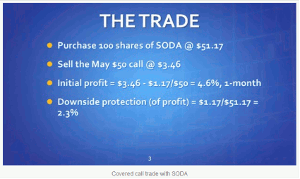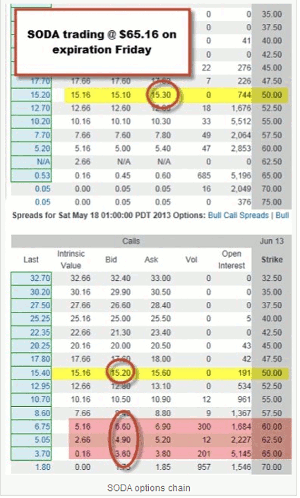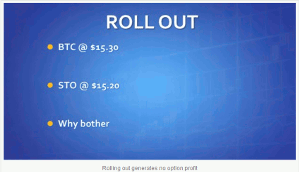Exit-strategy execution is a critical skill every covered call writer should master, says Alan Ellman of TheBlueCollarInvestor.com.
In addition to managing positions where share price has decreased, there are also situations where we can benefit when price has dramatically accelerated. Let's look at a trade recently executed by one of our premium members:
Our member generated a nice one-month return with downside protection of that profit. However, on expiration Friday, the price of the stock has accelerated all the way up to $65.16 and the $50 call was very deep in-the-money. The question is "to roll or not to roll" let's look at the options chain on this expiration Friday for May 17, 2013:
To buy back the $50 call (BTC) would have cost $15.30. Let's look at the trade if we rolled out to the June $50 call:
What if we rolled out and up to the $60, $62.50 or $65 strike choices? These scenarios will normally result in a net debit on the options side, but a net credit on the share price side as our $50 obligation to sell is eliminated and share value is enhanced to the new strike or current market value, whichever is lower. Let's look at the trade if we rolled out and up to the $62.50 strike:
The trade results in the following scenario:
We are guaranteed a one-month return of 4.2% as long as share value does not depreciate by more than 4.1% by expiration Friday because we rolled out and up to an in-the-money strike. In my books and DVDs, I give examples of rolling out an up to at-the-money and out-of-the-money strikes as well.
Conclusion
When a stock price moves up dramatically it usually does NOT pay to roll out as the option credit is negligible or non-existent. Rolling out-and-up may make sense because appreciation of current share value may surpass the option debit.
By Alan Ellman of TheBlueCollarInvestor.com














